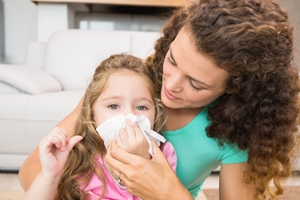
If you have bad allergies, you should keep a close eye on pollen counts and limit your time outside on high-count days. However, you must also pay attention to the allergens in your own home. According to the Asthma and Allergy Foundation of America (AAFA), eight out of 10 people in the United States come in regular contact with indoor dust mites, which are a common allergy trigger. To limit dust mite exposure, the AAFA recommends getting rid of carpeting in favor of machine washable rugs, vacuuming at least once a week and investing in preventative bedding.
"The single most important method is to put zippered allergen impermeable or plastic covers on all pillows, mattresses and box springs," the AAFA's website reads. You'll find all the allergy bedding you need on the Allergy Be Gone website.
Experts also urge allergy sufferers to adopt an aggressive cleaning regimen to minimize symptoms. Here are some routines you should perform on a daily basis:
Bedroom
In addition to investing in allergy bedding, get rid of any wall-to-wall carpeting, books, stuffed animals or knick-knacks. Don't allow pets in the bedroom, and vacuum once a day.
Kitchen
The American Academy of Allergy, Asthma and Immunology (AAAAI) recommends keeping trash in an insect-proof garbage can with a lid, and emptying it every single day. Keep all human and pet food stored in sealed containers. Use a kitchen exhaust fan to minimize moisture in the air.
Living room
According to the AAAAI, you shouldn't have any curios or books because they catch dust. If you must have these items, wipe them down with a damp cloth at least once a day. Also consider using allergy pillowcase covers on your sofa cushions. Dust mites love warm, humid environments, so run the air conditioner as often as necessary.









